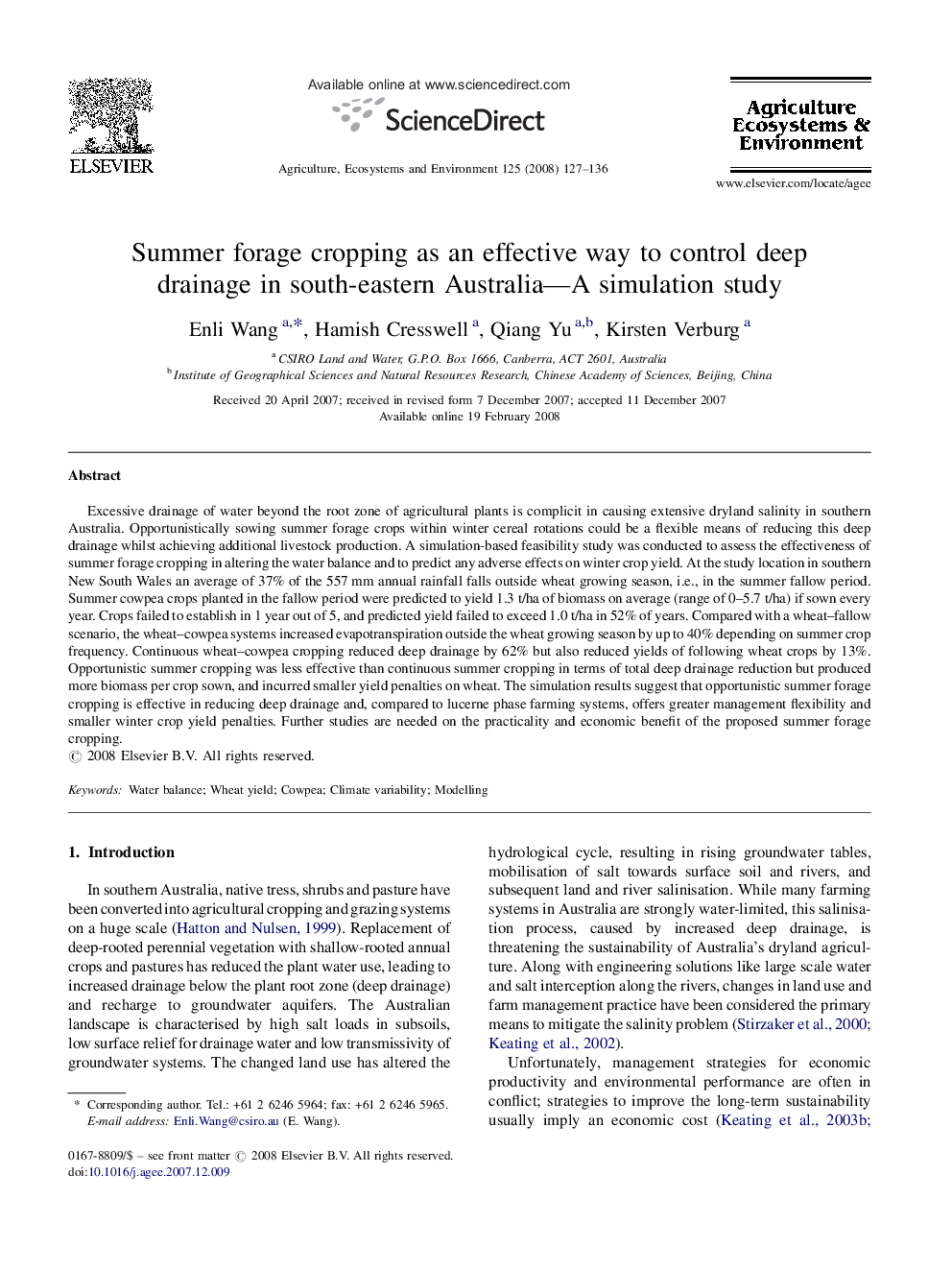| Article ID | Journal | Published Year | Pages | File Type |
|---|---|---|---|---|
| 2415425 | Agriculture, Ecosystems & Environment | 2008 | 10 Pages |
Excessive drainage of water beyond the root zone of agricultural plants is complicit in causing extensive dryland salinity in southern Australia. Opportunistically sowing summer forage crops within winter cereal rotations could be a flexible means of reducing this deep drainage whilst achieving additional livestock production. A simulation-based feasibility study was conducted to assess the effectiveness of summer forage cropping in altering the water balance and to predict any adverse effects on winter crop yield. At the study location in southern New South Wales an average of 37% of the 557 mm annual rainfall falls outside wheat growing season, i.e., in the summer fallow period. Summer cowpea crops planted in the fallow period were predicted to yield 1.3 t/ha of biomass on average (range of 0–5.7 t/ha) if sown every year. Crops failed to establish in 1 year out of 5, and predicted yield failed to exceed 1.0 t/ha in 52% of years. Compared with a wheat–fallow scenario, the wheat–cowpea systems increased evapotranspiration outside the wheat growing season by up to 40% depending on summer crop frequency. Continuous wheat–cowpea cropping reduced deep drainage by 62% but also reduced yields of following wheat crops by 13%. Opportunistic summer cropping was less effective than continuous summer cropping in terms of total deep drainage reduction but produced more biomass per crop sown, and incurred smaller yield penalties on wheat. The simulation results suggest that opportunistic summer forage cropping is effective in reducing deep drainage and, compared to lucerne phase farming systems, offers greater management flexibility and smaller winter crop yield penalties. Further studies are needed on the practicality and economic benefit of the proposed summer forage cropping.
